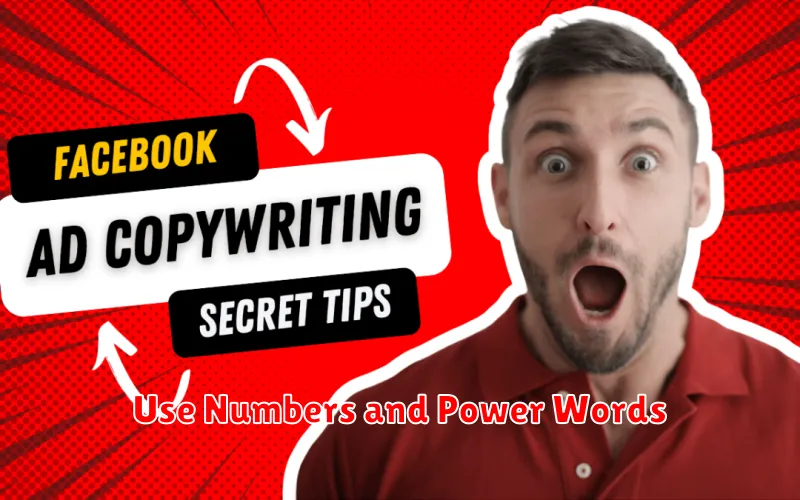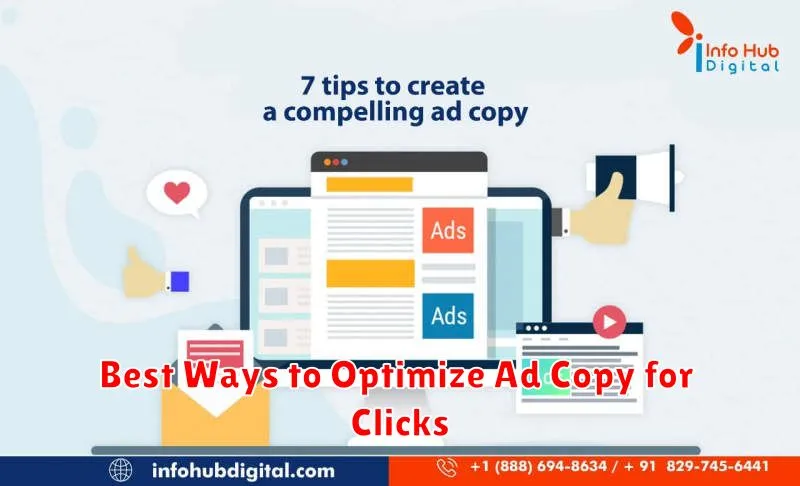Looking to boost your click-through rates (CTR) and drive more conversions? Optimizing your ad copy is a crucial step in achieving a successful advertising campaign. Writing compelling and effective copy can significantly impact how users interact with your ads. This article will delve into the best ways to optimize your ad copy for clicks, covering everything from keyword research and audience targeting to crafting compelling calls to action. Learn how to capture attention, communicate value, and ultimately drive more clicks with strategic ad copy optimization techniques.
From understanding the nuances of keyword placement and using persuasive language to A/B testing and analyzing performance data, this guide provides actionable strategies to elevate your ad copy. Whether you’re running search ads, social media ads, or display ads, the principles outlined here will help you maximize your clicks and improve your return on investment. Discover the secrets to writing ad copy that converts and unlock the full potential of your advertising efforts.
Know Your Target Audience
Before crafting compelling ad copy, it is essential to understand your target audience. Knowing their demographics, interests, needs, and pain points allows you to tailor your message for maximum impact.
Consider these key factors:
- Demographics: Age, gender, location, education, and income level.
- Interests: Hobbies, passions, and online behavior.
- Needs: What problems are they trying to solve? What solutions are they seeking?
- Pain Points: What frustrations or challenges do they face?
By understanding your audience, you can create ad copy that resonates with them, addresses their specific needs, and ultimately drives clicks.
Use Numbers and Power Words

Incorporating numbers and power words in your ad copy can significantly improve click-through rates. Numbers offer concrete information, making your offer more tangible and credible. For example, instead of saying “big discount,” use “50% off.” This gives potential customers a clear understanding of the savings.
Power words evoke strong emotions and create a sense of urgency or exclusivity. Words like “guaranteed,” “limited-time,” “exclusive,” and “instant” can capture attention and encourage immediate action. Consider the difference between “Get a discount” and “Get an Exclusive, Limited-Time 50% Discount.” The latter is much more compelling.
Strategically combine numbers and power words for maximum impact. “Get 50% Off Now – Limited Time Only!” utilizes both techniques effectively. Remember to be truthful and avoid exaggerating claims. Misleading information will ultimately damage your brand’s credibility.
Include Benefits, Not Just Features
When crafting compelling ad copy, focus on the benefits your product or service offers, rather than just listing its features. Features describe what your product is, while benefits explain how it improves the customer’s life. This subtle shift in perspective can significantly impact your click-through rate.
For example, instead of saying “Our headphones have noise-canceling technology,” (feature) try “Enjoy uninterrupted focus with our noise-canceling headphones.” (benefit). The latter highlights the positive outcome for the user: enhanced focus and productivity.
Consider creating a simple table to map out features and their corresponding benefits. This will help ensure your ad copy resonates with your target audience and motivates them to click.
| Feature | Benefit |
|---|---|
| High-resolution camera | Capture stunning, lifelike photos and videos. |
| Long battery life | Stay connected all day without recharging. |
Incorporate Keywords Naturally
Keywords play a crucial role in connecting your ad with the right audience. However, simply stuffing keywords into your ad copy can make it sound unnatural and deter potential customers. Natural keyword integration is essential for both user experience and search engine optimization.
Think about how your target audience would naturally search for your product or service. What words and phrases would they use? Incorporate these relevant keywords organically within your ad copy, ensuring they fit seamlessly within the sentence structure and context. Avoid forced or awkward phrasing.
For example, if you are advertising running shoes, instead of writing “Best running shoes, buy shoes, running shoes sale,” which sounds robotic, you might write “Find your perfect pair of running shoes for your next marathon. Shop our selection of high-performance running shoes and find incredible deals.” This approach uses relevant keywords like “running shoes,” “marathon,” and “high-performance” in a natural and engaging way.
Highlight Urgency and Scarcity
Creating a sense of urgency and scarcity in your ad copy can significantly increase click-through rates. People are more likely to act when they feel they might miss out on a limited-time offer or a dwindling supply.
Urgency focuses on time-limited availability. Use phrases like “limited-time offer,” “ends soon,” or “don’t miss out.” Clearly communicate the deadline to encourage immediate action.
Scarcity emphasizes limited quantity. Highlight phrases such as “limited stock,” “only a few left,” or “while supplies last.” This creates a sense of exclusivity and encourages quicker conversions.
Combine both tactics strategically. For example, “Limited-time offer: Only 10 spots left!” This powerfully conveys both a time constraint and limited availability, prompting users to click and act quickly.
Example:
- Original: “Sign up for our newsletter”
- Improved: “Sign up for our newsletter today and get 20% off! Offer ends midnight.” (Urgency)
- Improved: “Only 5 spots left in our exclusive webinar! Register now.” (Scarcity)
Test Variations with Split Testing
Split testing, also known as A/B testing, is a crucial technique for optimizing ad copy. It involves creating multiple versions of your ad, each with slight variations, and then running them simultaneously to see which performs best.
Typically, you’ll test one element at a time, such as the headline, call to action, or body copy. This isolates the impact of each change and allows you to identify the most effective wording.
For example, you might test two headlines:
- Headline A: “Get 50% Off Today!”
- Headline B: “Limited-Time Offer: 50% Off”
By analyzing metrics like click-through rates (CTR) and conversion rates, you can determine which headline resonates better with your target audience.
Key elements to test include:
- Headlines
- Body copy
- Calls to action
- Images (if applicable within the larger article context)
Consistent split testing allows for continuous improvement of your ad copy, leading to higher CTRs, conversions, and ultimately, a stronger return on investment.
Align Copy with Landing Page
A crucial aspect of ad copy optimization is ensuring consistency between the ad and the landing page. Users clicking on your ad expect a seamless transition to a page that directly addresses the promises and information presented in the ad itself. A disconnect between the two can lead to higher bounce rates and lower conversion rates.
Key elements to align include:
- Keywords and Themes: Use consistent terminology and messaging.
- Call to Action: Maintain a clear and consistent call to action across both platforms.
- Value Proposition: The landing page should immediately reinforce the value proposition presented in the ad.
- Design Elements: Consider using similar visuals and color schemes where appropriate to enhance the sense of continuity.
By creating a cohesive experience, you build trust with potential customers and increase the likelihood of conversions.

